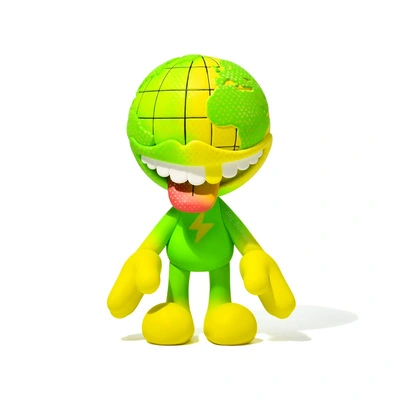
Immerse yourself in custom action-figure creation and express your creative core!
Beyond simple acquisition, it's an art of bringing imagined heroes into tangible reality.
Whether expert or beginner, use these tips to build, finish, and monetize custom figure projects.
Discover workflows from base choice to final varnish that turn ordinary toys into collectible customs.
- Commence by outlining the figure’s story, target buyers, and the production approach.
- Choose base figures with compatible joints and surface finish suitable for repainting.
- Develop painting workflows: surface prep, base coats, highlights, and protective varnishes.
- Test kitbashing methods and small-scale sculpting to dramatically change a figure’s identity.
- Feature your portfolio on a dedicated site, social platforms, and collector marketplaces to sell.

From Idea to Product: DIY Custom Action Figures
Launch a creative workflow that converts sketches into detailed, market-ready action figures.
- Kick off with a detailed character brief—look, lore, and target buyer—to shape design choices.
- Sketch front, side, and back views for accurate sculpting and clean production outcomes.
- Build up forms gradually, refine with micro tools, and ensure symmetry before curing.
- Implement a painting plan—base, midtones, shadows, details, and varnish—to streamline quality.
Turn Store Figures into Signature Customs: Tips & Tricks
Looking to enhance a lineup? Turn mass-produced figures into unique customs ideal for commission work.
Start by choosing a base with solid potential and plan the modifications to maximize visual impact.
* **Sculpting:** Apply modeling putty in layers, refining detail to ensure How To Make Action Figure strong, collectible parts.
* **Painting:** Effective painting involves proper surface prep, controlled layers, and protective finishes.
* **Accessories:** {Get creative with found objects and spare parts to craft unique weapons and stands.|Repurpose tiny components and kitbash parts to create distinctive props and display bases.|Combine printed parts, metal bits, and kitbashed pieces for specialty accessories.|Use 3D-printed or scratch-built accessories to increase perceived value and uniqueness.|Craft accessories from small-scale materials or print custom items to enhance desirability.|Invent accessories by converting everyday items into miniature props that pop on shelves.|Design removable and interchangeable accessories to offer collectors customization options.|Produce themed accessory sets that pair with figures to boost bundle sales and interest.|
How Action Figures Are Made: Manufacturing Insights
The process moves from hand-sculpted prototype to CNC tooling and efficient production workflows.
Materials are molded and assembled, paints apply color, and articulation parts are fitted to create the finished figure.
Quality control, faithful detailing, and narrative-driven design make figures appealing to fans and buyers.

Sculptural Techniques for One-of-a-Kind Figures
Creating premium custom figures merges sculptural craft with meticulous technical execution.
Follow disciplined steps—plan, sculpt, refine, paint, seal—to elevate a custom figure from hobby to product.
Pro Tools for High-Quality Action Figure Mods
- A full set of small hobby knives and cutters for controlled sculpting prep.
- Reliable modeling putties that are easy to shape and sand for production-quality parts.
- An expansive range of paints for base color, shading, and special effects.
Anatomy & Parts of an Action Figure
Explore the core components—from frame to finish—that define a collectible action figure.
The body core is produced in chosen material—hard plastic for structure or softer vinyl for flexibility.
Assemble an internal mechanism of joints that balances articulation with long-term robustness.
Curated accessory sets augment figures and provide upsell opportunities for sellers.
Final sealing and finish work preserve paintwork and ensure figures withstand handling and time.
Varnishes, Weathering, and Photo-Ready Finishes for Customs
Start finishing by addressing imperfections, smoothing joins, and applying a suitable primer coat.
Choose colors that complement the character and thin paints appropriately for controlled application.
Practice layering, glazing, and minute highlight work to add realism and definition to details.
Top-coat selection impacts presentation—pick sealers that suit the figure’s aesthetic and handling needs.
Inside the Studio: Interviews with Figure Artisans
Learn how professionals solve sculpting and production challenges in candid studio interviews.

Hobbyist Hub: Unite and Celebrate Figures
Join collector networks to show dioramas, custom mods, and participate in collaborative showcases.
Be part of a movement that celebrates creativity—share dioramas, modifications, and collector tales.
- Connect online and in person to swap gear, commission customs, and co-create display series.
- Use community resources—guides, forums, and peer feedback—to upgrade your craft and display.
- Showcase entries in competitions to gain exposure and potentially sell or commission new works.
Be part of a thriving scene that values creativity, offers exposure, and helps convert craft into revenue.
Selecting a Manufacturer for Custom Figures
Embarking on a quest for the ideal manufacturer can be exciting yet challenging—evaluate reputation, detail level, and material quality.
- Check manufacturer case studies and sample runs to confirm compatibility with your custom goals.
- Value suppliers who offer material choices that match your durability and finish requirements.

A trusted manufacturer supports scale-up and maintains the high finish collectors expect.